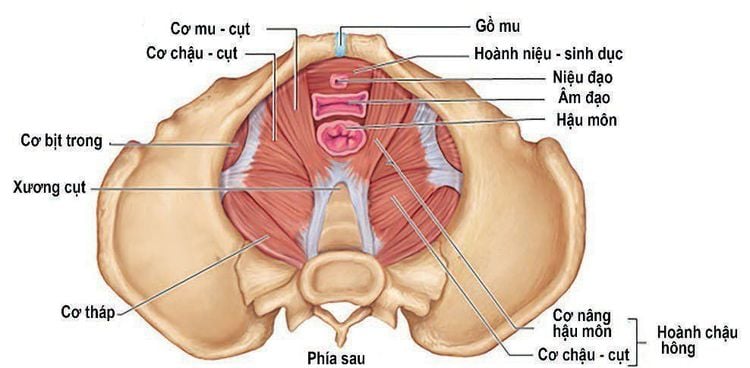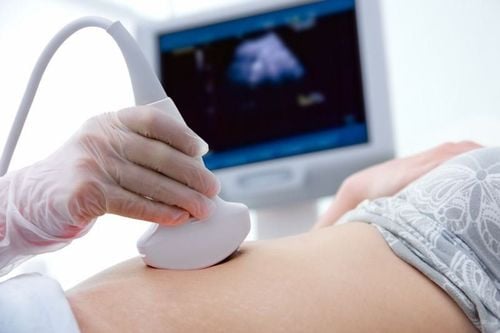This is an automatically translated article.
The article was professionally consulted with MSc Vo Thien Ngon - Urologist, Department of General Surgery, Vinmec Da Nang International Hospital.Urinary incontinence is a loss of bladder control. Urinary incontinence affects twice as many women as men. This may be because pregnancy, childbirth, and menopause can make urinary incontinence worse. Urinary incontinence is not a normal part of aging, and it can be treated.
1. Urinary incontinence in women
Urinary incontinence, also known as urinary incontinence, is the leakage of urine even when there is no need to go to the bathroom due to disorders related to bladder control. It is estimated that between 25% and 30% of Americans have urinary incontinence, which means that millions of people are living with the condition today. There are many types of urinary incontinence and they occur in both men and women, but certain factors increase the risk of urinary incontinence in women. Many people think that urinary incontinence is a normal condition related to the aging process of the body, but this is a very misconception.
Urinary incontinence is a health problem that affects many aspects from psychological, emotional to social communication. People with urinary incontinence may want to avoid certain places or situations due to fear of incontinence. Urinary incontinence can make it difficult for people to live their daily lives. Fortunately, there are many ways we can manage urinary incontinence and minimize its effects on women's daily functioning.
1.1. Causes of urinary incontinence
Urinary incontinence in women often occurs due to:
Weakened pelvic floor muscles. This condition occurs most commonly in young women. Activities like exercise, walking, gym, yoga, stretching, even laughing, coughing or sneezing can weaken the pelvic floor muscles and lead to urinary incontinence. In general, any activity that puts pressure on the pelvic floor muscles can weaken them, including sex. The amount of urine that leaks varies depending on the severity of the disease and how weak the pelvic floor muscles are.

Weakness of the urethral sphincter and the tissues that support the bladder can also cause urinary incontinence. These muscles and tissues can be weakened for a variety of reasons. Most causes of muscle and tissue weakness can be treated, but in some cases, the condition cannot be corrected. In addition, there are a number of factors that increase the risk of urinary incontinence in women as follows:
Age: The older you are, the higher your risk of urinary incontinence increases. Surgery: Women who undergo surgery, especially pelvic floor surgery that weakens the pelvic floor muscles, are also at great risk for urinary incontinence. Injury to the lower back nerve. Certain health problems such as chronic cough, being overweight or obese also increase the risk of urinary incontinence. Smoking Pregnant and lactating women. In particular, multiple pregnancies have a higher risk of urinary incontinence.
1.2. Symptoms of urinary incontinence
Urinary incontinence is related to urge incontinence, which occurs due to overactivity of the muscles that control bladder function. The characteristic symptoms of urinary incontinence are the sudden, excessive urge to urinate.
Frequent urination and frequent urination at night are also two of the typical symptoms of urinary incontinence. People with this condition may have urinary incontinence when they hear running water or even change position causing the bladder muscle to contract.
According to statistics, only 9% of women aged 40-44 suffer from urinary incontinence, while this figure in women over 75 years old rises to 31%.

2. Bladder control and more
Urinary incontinence is relatively common, especially among women. In most cases, bladder control can help treat urinary incontinence, helping to prevent its impact on a person's life. Here are some tips to help you easily control your bladder to limit incontinence:
Limit caffeine and alcohol: Caffeine and alcohol have diuretic effects. This means they have the potential to increase the amount of urine the body produces. For people with urinary incontinence, this contributes to worsening of their symptoms. Therefore, it is necessary to minimize the use of drinks containing a lot of caffeine and alcohol. Coffee, tea, soda, chocolate, and some medications are common sources of caffeine. Limit Artificial Sweeteners: Some artificial sweeteners including sodium saccharin, acesulfame K, and aspartame can irritate the bladder. Artificial sweeteners can also worsen urinary incontinence by acting as diuretics, similar to caffeine. For bladder control, avoid foods and drinks that contain these types of sugar substitutes. Avoid foods that irritate the bladder g: Some foods used daily can also cause bladder irritation and the body excrete more urine such as: tomatoes, apples, citrus fruits , spicy foods, corn syrups.... Trying to limit the use of these foods is also an effective way to make bladder control easier. Strengthen the pelvic floor muscles: Weakened pelvic floor muscles are one of the common causes of an overactive, sometimes uncontrollable bladder, especially in women. Pelvic floor exercises can help prevent this and strengthen the pelvic floor muscles. Pelvic floor exercises are relatively easy to do, but first you need to determine the exact position of the pelvic floor muscles. These are the muscles used by the body when trying to stop the flow of urine. Contract the pelvic floor muscles, hold them for 5-10 seconds, and slowly release. Scientists recommend doing pelvic floor exercises twice a day, performing about 30 contractions each time. In some cases, doctors will ask the patient to try not to urinate. Combined with pelvic floor exercises and other treatments, holding your bladder can help you better control your bladder. To control the urge to go to the bathroom, you need to try to do this at fixed times of the day. Also, hold your urine for 10 minutes after feeling bladder irritation and gradually increase this time with subsequent urination. In addition to bladder control, the treatment of urinary incontinence depends on the cause of the condition. If urinary incontinence is related to other health problems, treating the root cause is more effective.
In some cases, urinary incontinence cannot be cured, but doctors can give advice to help patients minimize its effects on life such as: food and fluid intake each day. Use absorbent underwear or pads Get in the habit of urinating at certain times of the day

Get into the habit of urinating at certain times of the day Maintain a stable weight Regular exercise, sports Limit the use of alcohol, beer, caffeine and tobacco. Pregnancy is a medical condition associated with loss of bladder control. Urinary incontinence causes many troubles for patients in life and makes them lose confidence in communication as well as in daily work. In some cases, urinary incontinence cannot be cured, but there are methods that you can apply to minimize the consequences that incontinence can bring in life.
To reduce and control the nuisance caused by urinary incontinence, you can visit and treat at Vinmec International General Hospital - One of the hospitals that not only ensures professional quality with a team of leading medical professionals, a system of modern equipment and technology, but also outstanding with comprehensive and professional medical examination, consultation and treatment services; civilized, polite, safe and sterile medical examination and treatment space.
Please dial HOTLINE for more information or register for an appointment HERE. Download MyVinmec app to make appointments faster and to manage your bookings easily.














